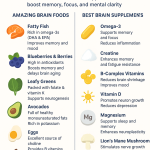Action Video Games and the Brain
Can playing action video games actually rewire your brain? According to neuroscience research, the answer is yes. Studies suggest that action video games can improve prefrontal cortex function by promoting structural changes like increased cortical thickness, a key factor linked to higher-order thinking, decision-making, and executive functions such as self-control.
This is more than a headline-grabbing claim—it’s rooted in scientific studies that show how regular gaming can shape gray matter, strengthen neural pathways, and even sharpen cognitive flexibility. The prefrontal cortex, often called the “CEO of the brain,” governs our ability to plan, regulate emotions, resist impulses, and solve complex problems. And surprisingly, digital worlds filled with quests, missions, and fast-paced decisions can train this region like a mental gym.
In this pillar post, we’ll explore:
- How the prefrontal cortex works and why it’s vital for success in life.
- The neuroscience of gaming-induced brain plasticity.
- Evidence from brain imaging studies on cortical thickness and structural changes.
- The link between action video games, decision-making, and executive function.
- Practical ways to use gaming to train your mind—without falling into addiction traps.
Let’s dive into the fascinating intersection of neuroscience and gaming.
What is the Prefrontal Cortex?
The prefrontal cortex (PFC) is the brain’s command center, located in the frontal lobe just behind your forehead. It plays a central role in executive functions, which include:
- Decision-making – weighing options and choosing the best course of action.
- Self-control – resisting impulses and delaying gratification.
- Working memory – holding and manipulating information in the short term.
- Cognitive flexibility – adapting to new situations and switching between tasks.
- Planning and goal-setting – envisioning long-term outcomes and acting accordingly.
Neuroscientist Joaquin Fuster (2008) described the prefrontal cortex as the “temporal integrator of action,” meaning it helps us think about the past, present, and future simultaneously when making decisions.
Why the Prefrontal Cortex Matters
A strong prefrontal cortex is linked to:
- Higher academic achievement.
- Better emotional regulation.
- Reduced risk of impulsive behaviors (e.g., substance abuse).
- Improved financial decision-making.
- Greater career and leadership success.
In short, your PFC determines much of your real-world outcomes. If video games can strengthen this area, it’s a powerful argument against the old stereotype of gaming as “mindless entertainment.”
Neuroplasticity: How the Brain Adapts
The concept of neuroplasticity is essential for understanding why video games can reshape brain function. Neuroplasticity refers to the brain’s ability to reorganize itself by forming new neural connections throughout life.
Structural vs. Functional Plasticity
- Structural plasticity: Physical changes in gray matter, white matter, and cortical thickness.
- Functional plasticity: The brain’s ability to use different regions more efficiently.
Action video games engage both forms. Studies using MRI and fMRI have shown that gamers often exhibit thicker gray matter in the prefrontal cortex and enhanced connectivity in networks responsible for attention and decision-making (Kühn & Gallinat, 2014).
Action Video Games and Cortical Thickness
One of the most striking findings is that action video game training increases cortical thickness in the prefrontal cortex. Cortical thickness is associated with:
- Stronger working memory.
- Faster decision-making.
- Better emotional regulation.
- Improved problem-solving skills.
The Science Behind It
- Kühn et al. (2014) – A longitudinal study found that participants who played Super Mario for 30 minutes a day over 2 months showed increased gray matter in the prefrontal cortex and hippocampus compared to controls.
- Bavelier & Green (2012) – Their research demonstrated that action gamers had enhanced attentional control and decision-making speed, directly tied to PFC activity.
- Shaw et al. (2006) – Found a correlation between cortical thickness and intelligence, suggesting that thicker PFC regions lead to better cognitive performance.
Why Action Games Specifically?
Not all games provide the same benefit. Action video games—such as Call of Duty, Overwatch, or Halo—require rapid shifts of attention, multitasking, quick decisions under pressure, and inhibition of impulsive responses. These are the exact skills regulated by the prefrontal cortex.
By repeatedly training these abilities in a high-stakes environment, gamers reinforce PFC circuitry.
Executive Function and Gaming
Let’s break down how action video games train executive functions one by one.
1. Decision-Making Under Pressure
In fast-paced shooters or strategy-based action games, players must assess multiple variables in real-time—enemy movement, available resources, and potential risks. This mimics real-world decision-making and strengthens neural efficiency in the dorsolateral prefrontal cortex.
A 2015 study in Proceedings of the National Academy of Sciences showed that gamers made decisions up to 25% faster than non-gamers, with no loss in accuracy.
2. Self-Control and Inhibition
Impulse control is tested constantly in gaming. For example, rushing into a firefight without cover often results in failure. Players learn to suppress immediate reactions and plan strategically—a form of “cognitive inhibition.”
3. Working Memory Enhancement
Keeping track of maps, objectives, team strategies, and enemy positions engages working memory. Over time, this strengthens connectivity between the prefrontal cortex and parietal regions.
4. Cognitive Flexibility
Action games often force players to switch strategies mid-game. Flexibility is essential in both gaming and life, and studies confirm that gamers outperform non-gamers in task-switching tests (Colzato et al., 2010).
Structural Brain Changes Beyond the Prefrontal Cortex
While the PFC is the focus, action video games also influence:
- Hippocampus: Linked to memory and spatial navigation.
- Anterior cingulate cortex (ACC): Governs error detection and conflict monitoring.
- Basal ganglia: Supports habit formation and procedural learning.
This broad neural engagement makes gaming a full-brain workout rather than a single-skill activity.
Addressing the Critics: Is Gaming Bad for the Brain?
Critics often argue that video games lead to addiction, aggression, or social withdrawal. While excessive use can be harmful, moderate and intentional gaming provides measurable cognitive benefits.
- Addiction risk: Tied more to reward pathways (dopamine system) than structural damage.
- Aggression: Meta-analyses show mixed results; context and personality matter more than the game itself.
- Social isolation: Online multiplayer formats can actually increase teamwork and communication skills.
The key is balance—structured playtime, combined with physical exercise and offline activities.
Practical Tips: Using Gaming to Train Your Brain
If you want to harness gaming for brain health, here’s how:
- Choose Action or Strategy Games – Titles that challenge attention, memory, and decision-making (e.g., Call of Duty, Apex Legends, StarCraft II).
- Play in Moderation – 30–60 minutes a day is sufficient to see benefits without risking addiction.
- Set Cognitive Goals – Focus on improving reaction time, working memory, or self-control rather than just entertainment.
- Mix with Real-World Challenges – Pair gaming with mindfulness, exercise, and puzzles to balance brain training.
- Track Progress – Use apps or journaling to monitor improvements in attention span and decision-making outside of gaming.
Future of Gaming and Brain Training
The gaming industry is increasingly aware of its potential in neuroscience. “Serious games” are being developed for cognitive rehabilitation, ADHD treatment, and even early Alzheimer’s intervention.
Companies like Akili Interactive are creating FDA-approved video game therapies designed to improve executive functions in children with ADHD. This signals a future where video games are not just entertainment but prescribed digital medicine.
Key Studies on Action Video Games and the Prefrontal Cortex
- Kühn, S., & Gallinat, J. (2014). “Brain structure and video gaming: A longitudinal study.” Molecular Psychiatry.
- Bavelier, D., & Green, C. S. (2012). “The brain-training potential of video games.” Nature Reviews Neuroscience.
- Colzato, L. S., et al. (2010). “Action video gaming and cognitive flexibility.” Frontiers in Psychology.
- Shaw, P., et al. (2006). “Intellectual ability and cortical development in children and adolescents.” Nature.
Conclusion: Rethinking Video Games
The stereotype of video games as mind-numbing distractions is outdated. Modern neuroscience shows that action video games improve prefrontal cortex function by promoting structural changes like cortical thickness, leading to better decision-making, self-control, and executive function.
With balance and intentional play, gaming can serve as a mental gym that sharpens the very skills we rely on for success in school, work, and life.
So the next time someone dismisses gaming as a waste of time, you can confidently respond: “Actually, I’m training my prefrontal cortex.”
Want to explore more on how exercise shapes the brain? Check out our brain-healthy motion & diet article here.”
What Japanese Brain-Scan Research Reveals About Gymnast Neuroplasticity
An illuminating study reported by The Asahi Shimbun reinforces this deep dive into neuroplastic changes in Olympic-level gymnasts—which aligns perfectly with our core topic.
Researchers led by Hidefumi Waki at Juntendo University conducted MRI scans on 10 male gymnasts with world-class credentials and compared them to a control group of non-athlete males. Strikingly, certain regions of the gymnasts’ cortex were about 10% larger—notably the precentral gyrus (motor function) and the inferior parietal lobule (involved in spatial perception and sensory integration) 朝日新聞.
Furthermore, the team discovered that athletes with higher average competition scores tended to have larger volumes in the inferior parietal lobule, suggesting that long-term training reshapes brain regions tied to spatial and sensory processing 朝日新聞. Interestingly, no regions were found to be smaller, underscoring that these adaptations appear to be built—not traded off.
Waki notes that gymnasts’ ability to make split-second body adjustments—even before initiating movement—is central to their expertise 朝日新聞. These insights dovetail with our discussion on prefrontal recalibration, motor-visual integration, and the emergence of autopilot-like performance in elite athletes.



